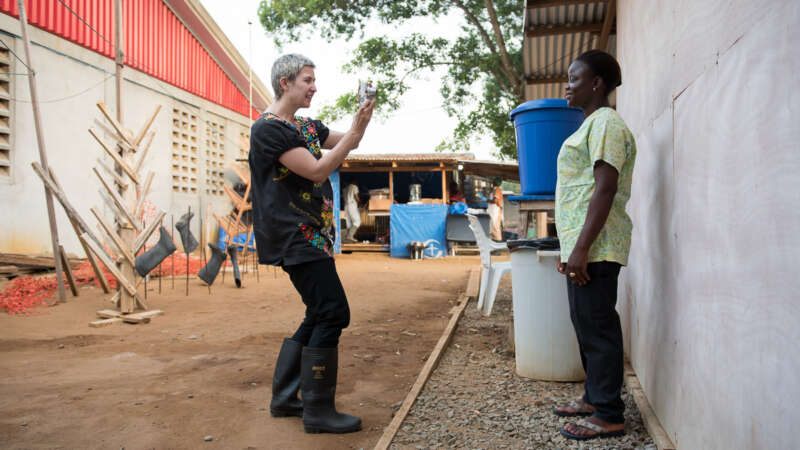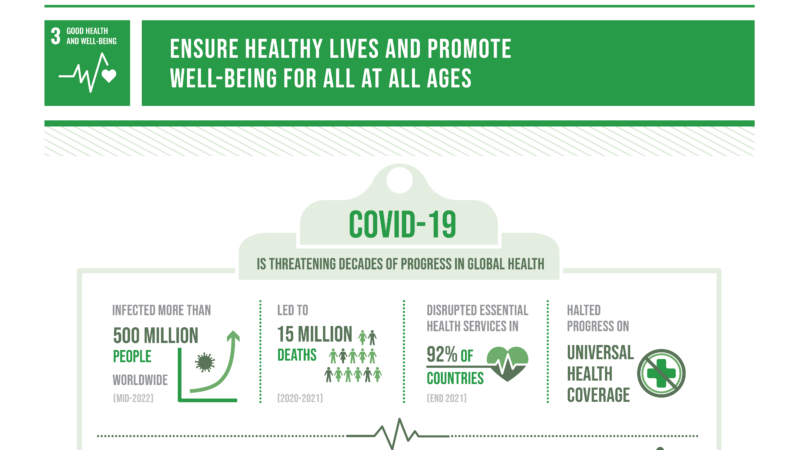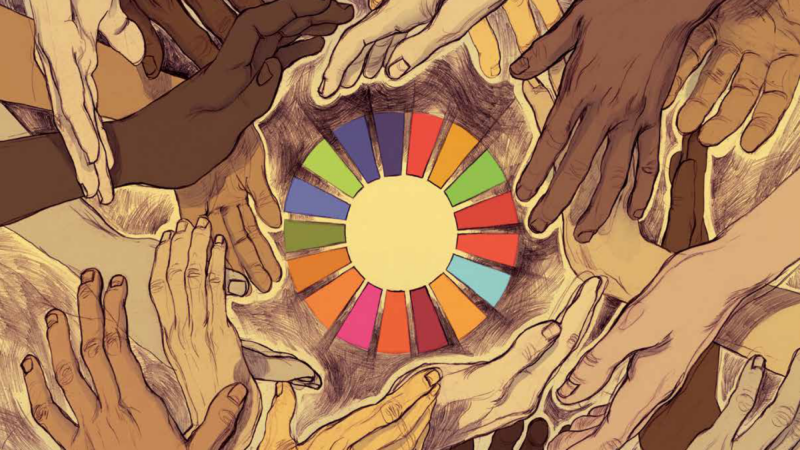Physiological
Mary Beth Heffernan: From the Studio to the Hospital Ward
Mary Beth Heffernan, a Los Angeles based artist, brings together corporeality and imagery through various media. Her work examines deep questions about how bodies and their experiences are represented in digital and physical forms.
One of Heffernan’s most notable projects, the PPE Portrait Project, began in 2014 to humanize the protective gear of Ebola workers in Liberia. By placing portraits on protective equipment, the project helped mitigate fear and foster connections between healthcare workers and patients. The initiative gained international attention and was adapted for COVID-19 response, impacting healthcare settings worldwide, including major institutions like Stanford Medical School and Massachusetts General Hospital.
Breaking Down UN SDG 3: Good Health and Well-Being
The United Nations’ Sustainable Development Goal 3 (SDG 3) aims to ensure healthy lives and promote well-being for all. From reducing maternal and child mortality to combating infectious diseases, SDG 3 encompasses a wide range of health-related issues that are essential for building a sustainable planet.
In this infographic, we will delve deeper into the specific targets of SDG 3 and examine the progress made so far in achieving them. Join us as we explore the importance of good health and well-being, and the steps we can take to make it a reality for everyone.
Earth Day & Public Health: Unavoidably Connected
Each year on April 22nd, people and nations around the world celebrate Earth Day to raise awareness and promote action toward environmental protection and sustainability. Activities typically include community clean-ups and educational campaigns designed to promote sustainability in daily life.
The origins of Earth Day date back to the 1960s and a decade of growing enviro-consciousness brought about by the publication of Rachel Carson’s Silent Spring and a series of environmental disasters that climaxed with a devastating oil spill off the coast of California in 1969. Gaylord Nelson, a U.S. Senator from Wisconsin, organized the first Earth Day in 1970, when an estimated 20 million Americans took part in organized activities ranging from tree plantings to beach cleanups and teach-ins on college campuses.
Since those humble beginnings, Earth Day has become a global event – but amidst the tree plantings and landscape revitalization lies a subtle and yet direct connection between Earth Day and Public Health. Just as we depend on the natural environment for our survival, civilization creates and shapes a social and economic environment that greatly influences the health and well-being of our species.
Eight Trends Shaping Global Healthcare
The challenges faced by the global health and healthcare sector are set to continue in the future. The near-term issues include worsening mental health, healthcare workforce shortages, supply chain issues, climate change-related challenges and macroeconomic instability. The longer-term challenges include growing demand for services, an increasing funding gap, a lack of incentives for innovation, widening disparities in overall health and wellness, and variable access to advanced therapies.
As we approach World Health Day on 7 April, here are eight current global health and healthcare trends we need to contend with as we aim to transform systems to become more sustainable, resilient and equitable.



